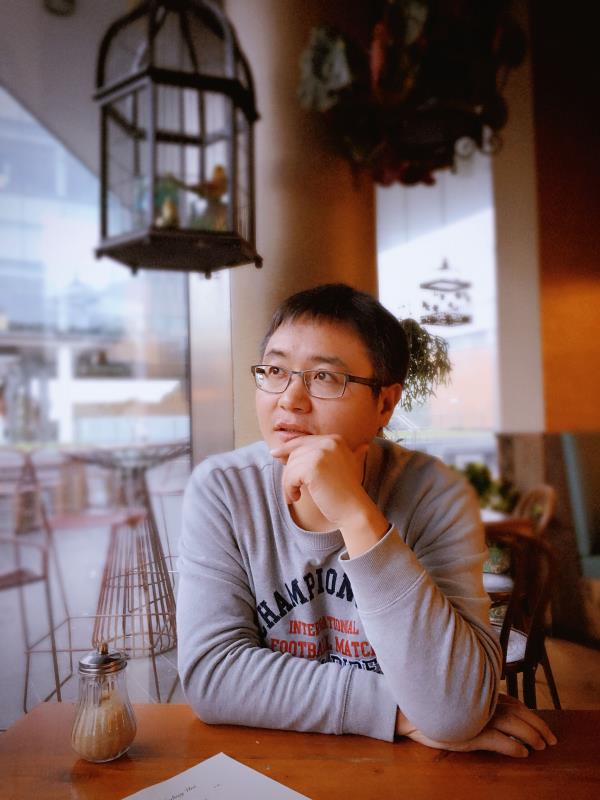 In June 2017, the first session of the teaching skills competition of the Open University of China (OUC) concluded. Ma Shaojun, a tutor from the OUC Zhejiang branch, won the best online design prize for his “timely learning reminders + learning via online platforms + special quizzes + real-time assignments” teaching model. He also won the overall first prize.
In June 2017, the first session of the teaching skills competition of the Open University of China (OUC) concluded. Ma Shaojun, a tutor from the OUC Zhejiang branch, won the best online design prize for his “timely learning reminders + learning via online platforms + special quizzes + real-time assignments” teaching model. He also won the overall first prize.

The arrival of the “Internet Plus” era has made mobile learning the norm. In response to this context, Ma Shaojun attaches great importance to the function of WeChat in online tutoring and has adopted the “timely learning reminders + learning via online platforms + special quizzes + real-time assignments” teaching model in his learning groups and his social circle. For example, he uses interesting pictures to explain difficult questions like “Which one is more popular, the cat or the pigeon? Thorndike’s connectionism and Skinner’s theory of operational conditions.” Furthermore, in order to add more fun to the learning process, Ma Shaojun designs amusing yet professional questions to arouse and maintain the learner’s motives, for example, according to Thorndike’s connectionism, in which mechanism does learning behaviour take place? A. Insight B. Trial understanding C. Enlightenment D. Awareness. He also requires that the learners use Xmind software to create mind maps of what has been learned and upload them to the online learning platform, for them to be reviewed and remarked by the tutor within 24 hours.
This teaching model is effective and has been well received by the students.
Ma Shaojun used to get confused with his teaching work at the open university. When he graded a test paper for the Orientation Guide of Open Education, he felt concerned when he read the test taker’s view of open education: “Open education does provide a precious opportunity for us — primary school teachers in the mountainous areas — but so far, I haven’t truly feel the advantages of open education in terms of its learning implementation formats or teaching channels. The teacher-student and student-student interactions are insufficient, either in its face-to-face instruction or online learning, which certainly influence the effectiveness of learning.”
The answer is actually a representation of the learner’s views. In order to help learners solve their problems, Ma Shaojun began to explore a new tutoring model for online learning in his future work.
Ma Shaojun thinks implementing teaching interactions requires a great degree of guidance and preparation. He has done a lot of work to develop learner’s habits for both online and offline learning. He used to make no less than ten phone calls and send no less than ten text messages to every student per semester, giving all sorts of learning reminders and guidance to nearly 200 students. “By doing this, I intend to constantly remind my students to participate in online learning and intensify their learning habits,” he said. With his constant monitoring, encouragement, and timely responses, his students began to develop habits such as reading online literature, posting questions, and joining Q & A sessions, signifying that Ma Shaojun has created the initial stages of an online open education learning model.
Ma recalled that one of his most impressive students was from an island. Obviously, the geographical limitations of his home made it impossible to give face-to-face instruction to him, so all of his courses were completed through the learning platform or Tencent QQ. Before the final exam, the student managed to meet Ma and told him, “If you were not here with me, I would not be able to get through my studies. I used to do self-taught exam education and it was very lonely. When I started open education, it feel good to have someone accompany me all the way through my studies. However, this doesn’t mean that open education is much easier than self-taught exam education, nor did I do a better job than before.” Ma believes that his teaching helped this student alleviate his loneliness, which was very rewarding. The teacher and the student developed a good emotional relationship, which in return promotes effective teaching.
Ma encourages his students to apply what they have learnt in and beyond the textbooks to solve practical issues in their work and day-to-day lives. Ma takes responsibility for filing different questions into different subjects or topics and organising discussions, after which he gives summaries and remarks. Ma also timely notes down any problems encountered during his classes and then uploads them onto the learning platform. He then organises related discussions on specific knowledge points, combining both theory and the practice. Many of Ma’s students have written papers on topics such as psychology and school management, and some of them have been published.
“I want to provide timely and effective learner support services for my online learning students, enabling them to achieve their academic goals and enjoy studying at the open university,” Ma Shaojun said, confidently.
By Ma Shaojun, Jinhongyu, OUC